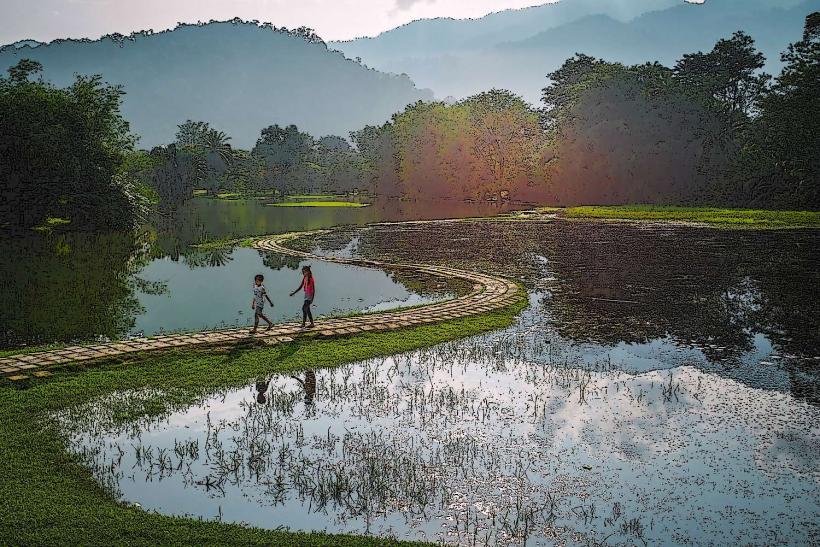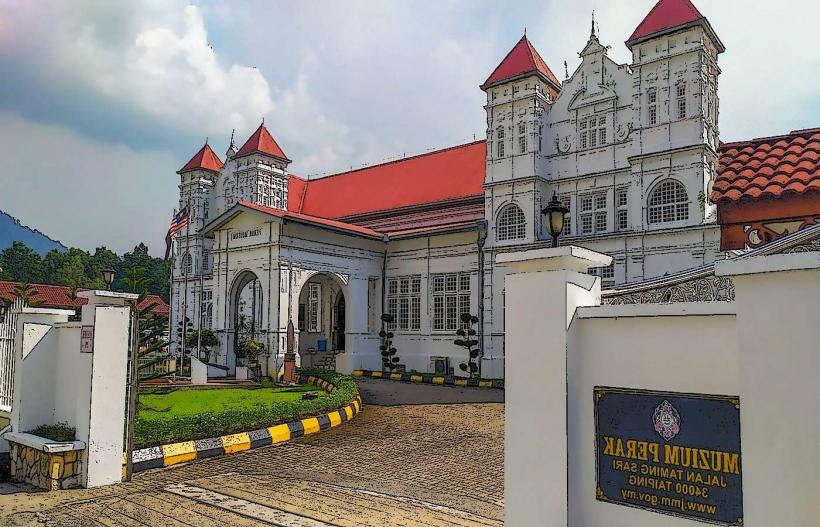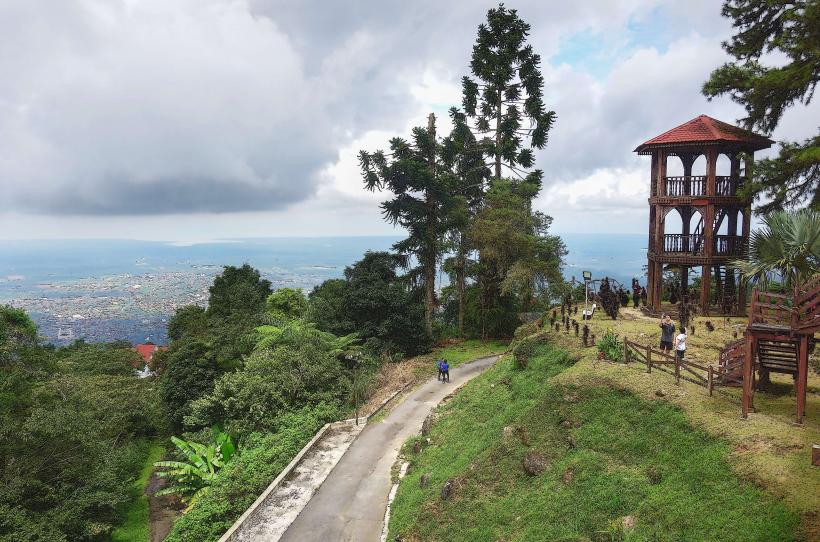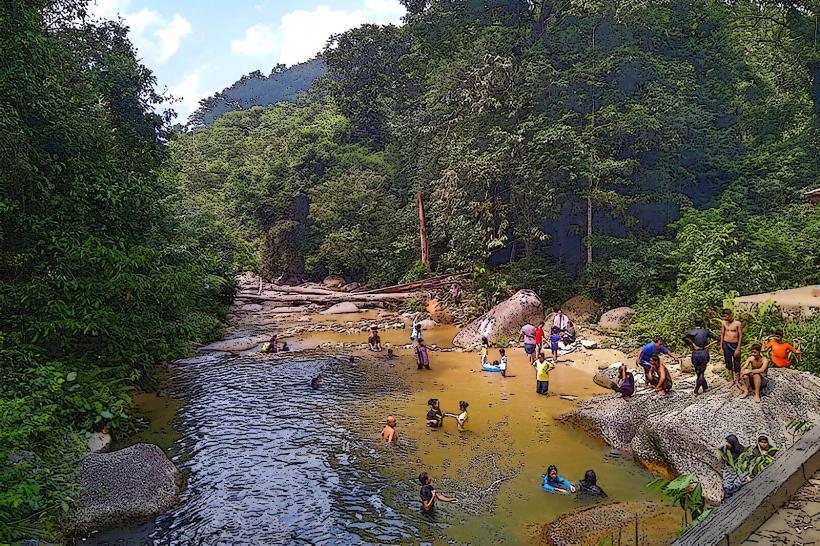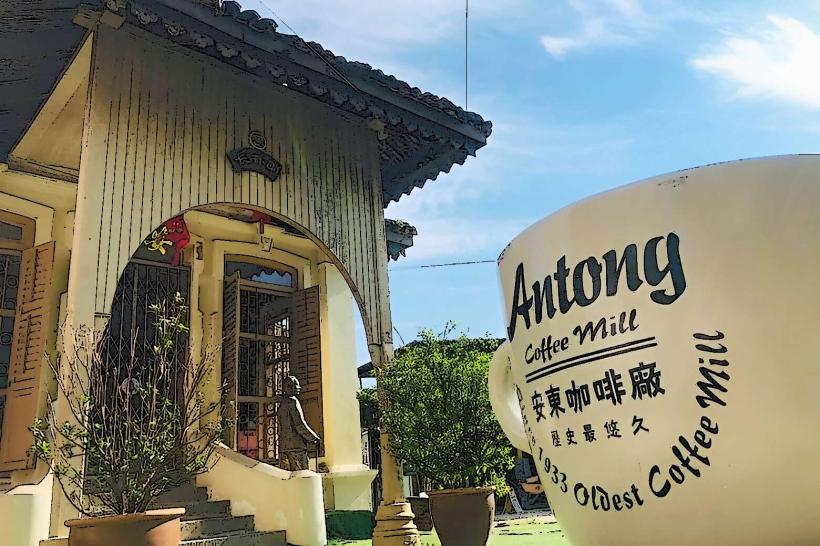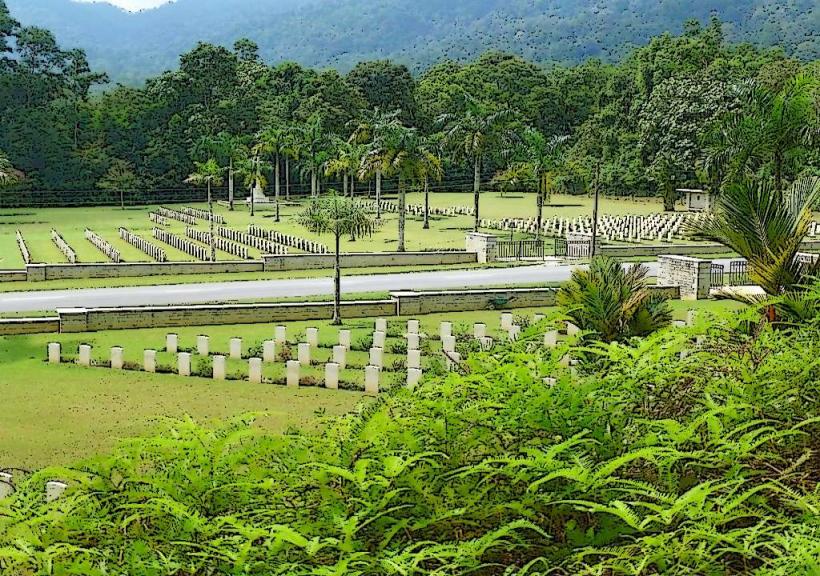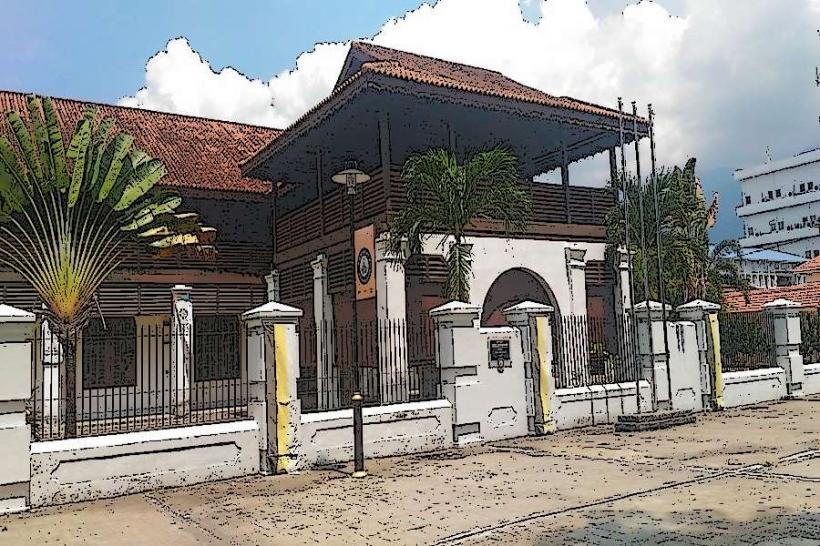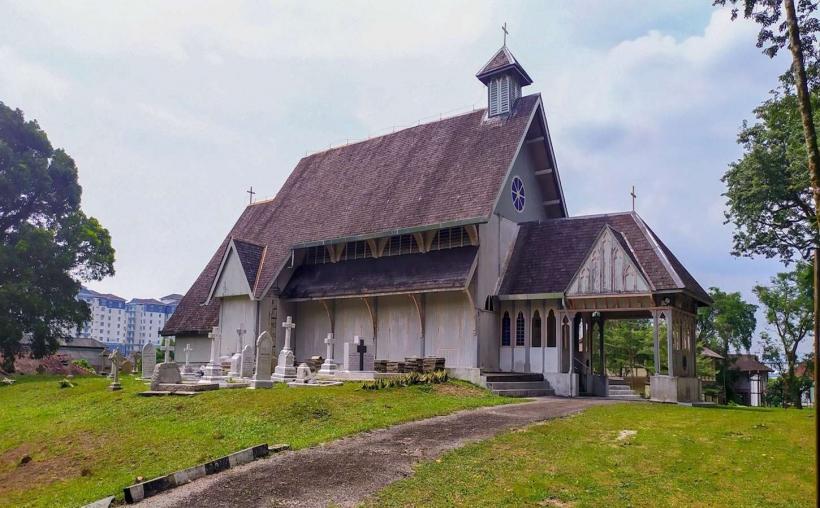Information
Landmark: Kota Ngah Ibrahim MuseumCity: Taiping
Country: Malaysia
Continent: Asia
The Kota Ngah Ibrahim Museum is a historical museum located in Pasir Salak, Perak, Malaysia. It is situated in the Kota Ngah Ibrahim, a former palace and stronghold, and is dedicated to the life and legacy of Ngah Ibrahim, a prominent figure in the history of Perak. The museum offers visitors a unique opportunity to learn about the Malay Sultanate and the significant events that occurred in the region during the 19th century.
History of Kota Ngah Ibrahim and the Museum
Ngah Ibrahim was a Malay nobleman who played a crucial role in the Perak region during the colonial period. He was a **chief of the Hilir Perak district and a key figure in the Malayan Sultanate, especially during the time when the British colonial presence in Malaya was growing.
The Kota Ngah Ibrahim: The museum is housed in the former fortress or palace of Ngah Ibrahim, a historical structure known as Kota Ngah Ibrahim. It was originally built as a fortified residence and a base for Ngah Ibrahim’s administration. The building was constructed in the late 19th century and reflects a unique blend of Malay and colonial architecture.
Historical Significance: Ngah Ibrahim’s influence in Perak extended to various important events, including his involvement in the Perak War (also known as the Larut War) and the political struggles with the British colonial authorities. The museum offers an insight into his life and the turbulent period of Malay-British relations during the 19th century.
Exhibits and Collections
The Kota Ngah Ibrahim Museum showcases a variety of historical artifacts, documents, and displays that highlight the rich history of Ngah Ibrahim and Perak. The museum's collections are designed to provide visitors with an understanding of the local culture, historical events, and the influence of British colonialism in the region.
1. Life and Legacy of Ngah Ibrahim
The museum provides an in-depth look at the life of Ngah Ibrahim, his role as a Malay chief, and his conflicts with the British. It highlights his contributions to the administration of Perak and the local political landscape during the period leading up to and after the Perak War.
Personal artifacts of Ngah Ibrahim are displayed, including letters, documents, and photographs, which help to humanize this significant historical figure. Visitors can learn about his ambitions, his role in local governance, and his eventual exile after his defeat by the British.
2. Perak’s Political History
The museum also features exhibits on the history of Perak, including the Perak War, which was a conflict between the Chinese secret societies (primarily the Ghee Hin and Hai San) and the Malay rulers in the late 19th century. The museum showcases the role of Ngah Ibrahim and other leaders in the Larut Wars and the British intervention.
Visitors can explore the political tensions that existed between the local Malay rulers and the British colonial government during the colonial period. The museum provides a timeline of events that led to the eventual British control of Perak.
3. Colonial and Malay Architecture
The building itself, Kota Ngah Ibrahim, is an example of 19th-century architecture that blends traditional Malay and colonial influences. The museum's exhibits reflect this architectural style, with sections dedicated to the construction of the fort and its use as both a residential space and military stronghold.
The architecture is also a symbol of the complex relationship between Malay rulers and the British during this time. The fortress was designed to withstand attacks and to project power, yet it was also a place where diplomacy and cultural exchange took place.
4. Local Culture and Artifacts
The museum also displays local cultural artifacts, such as traditional Malay weapons, ceramics, textiles, and tools used by the people of Perak during the colonial era. These items provide a glimpse into daily life during the 19th century and reflect the cultural heritage of the region.
Additionally, there are sections dedicated to traditional Malay customs and local crafts, helping to showcase the rich culture of the area beyond its political history.
Architecture and Layout
The Kota Ngah Ibrahim Museum is housed in a fortress-like building with a combination of traditional Malay and colonial architectural styles. The building's design reflects its original purpose as both a military stronghold and a residence for Ngah Ibrahim. The structure is made of brick and wood, with high ceilings and large windows, allowing for ventilation in the hot climate of Perak.
Fortress Design: The museum building was strategically designed to serve as a fort during Ngah Ibrahim’s reign. Its thick walls, small windows, and defensive layout made it an ideal location to withstand potential attacks.
Courtyards and Gardens: The museum complex includes open courtyards and gardens, which were part of the original fortress. The courtyards are used as spaces for events and exhibitions, while the gardens provide a tranquil environment for visitors.
Visiting Kota Ngah Ibrahim Museum
The Kota Ngah Ibrahim Museum is located in Pasir Salak, a historical district in Perak, Malaysia. It is easily accessible by road from Ipoh and is a popular destination for those interested in the region’s history, particularly in the Malay Sultanate and colonial struggles.
1. Opening Hours
- The museum is generally open to the public during the day, with visiting hours from 9:00 AM to 5:00 PM. However, visitors are encouraged to check the museum’s website or local sources for up-to-date information on opening hours.
2. Entry Fee
- There is a small admission fee for visitors, typically affordable. This helps in the preservation of the museum and its exhibits. Discounts may apply for students and locals.
3. Guided Tours
- The museum offers guided tours that provide deeper insights into the exhibits and the historical context of Ngah Ibrahim and Perak. Guides can share detailed stories about the history of Perak and the legacy of Ngah Ibrahim.
Why Visit Kota Ngah Ibrahim Museum?
Rich Historical Insight: The museum provides a detailed exploration of the 19th-century political history of Perak, including the Perak War and the British colonial period. It helps visitors understand the political struggles, colonial influences, and the role of local rulers during this time.
Cultural Heritage: The museum offers a unique glimpse into the Malay cultural heritage of Perak, with exhibits on traditional crafts, local customs, and the multicultural aspects of the region.
Architectural Interest: The Kota Ngah Ibrahim building itself is a historically significant structure, and its fortress-like design and colonial architecture are of interest to history and architecture enthusiasts.
Conclusion
The Kota Ngah Ibrahim Museum in Pasir Salak, Perak, is an important historical landmark that offers a deep dive into the rich history of the region, focusing on Ngah Ibrahim's life and the colonial struggles of the 19th century. The museum's collections, architecture, and exhibits provide valuable insights into the cultural and political history of Perak, making it a must-visit destination for anyone interested in the region’s past.

